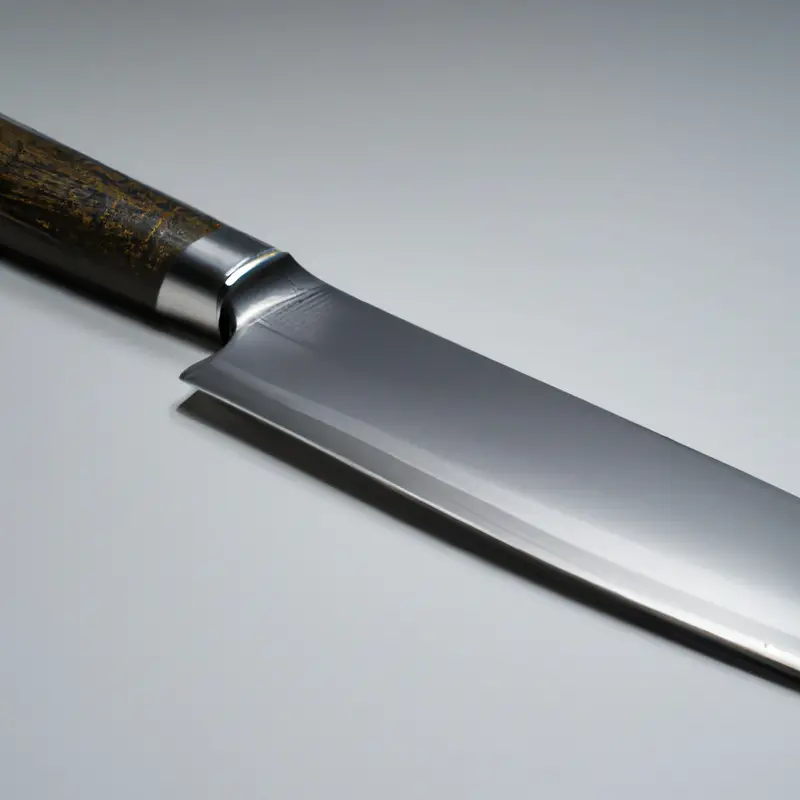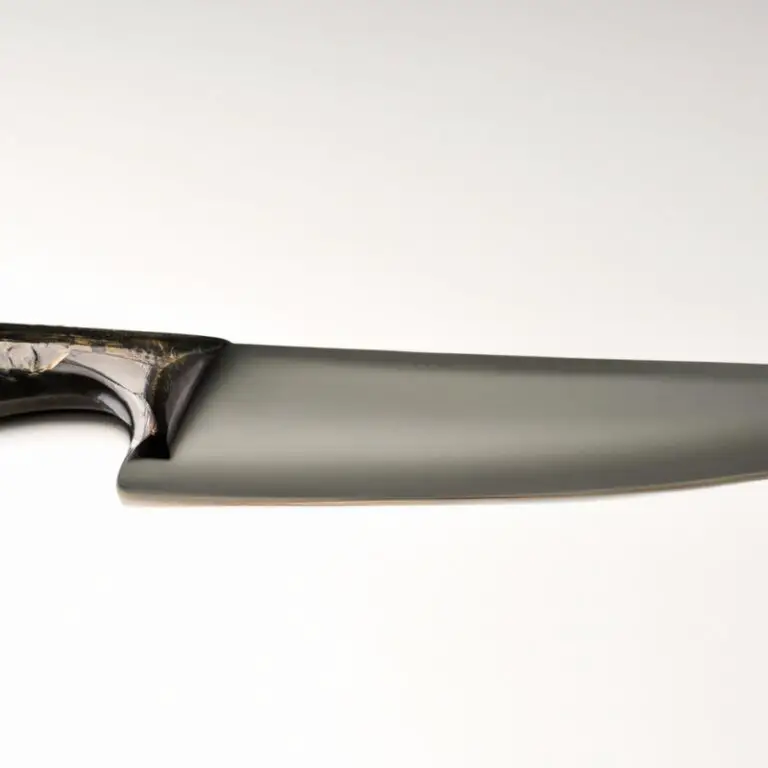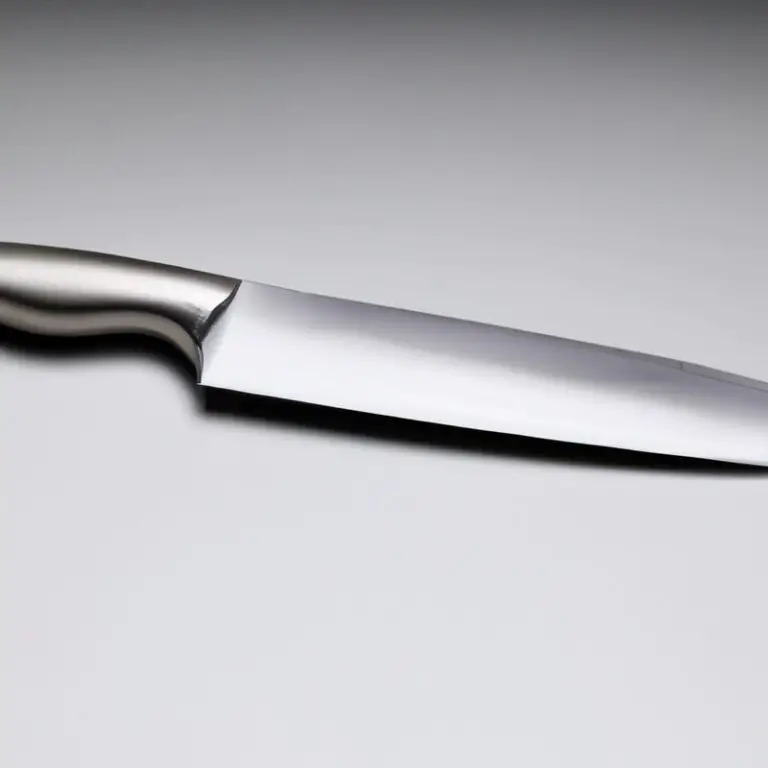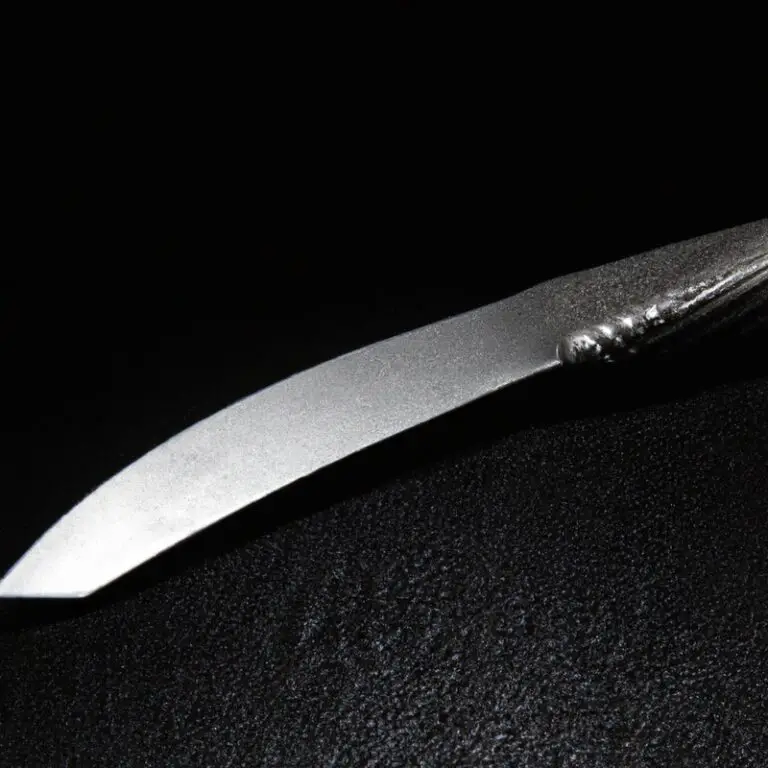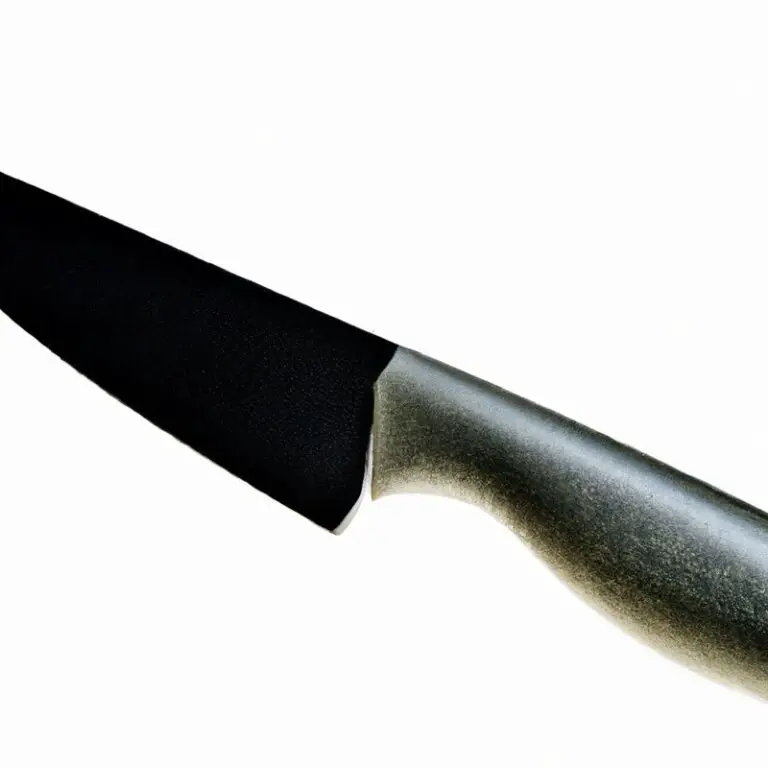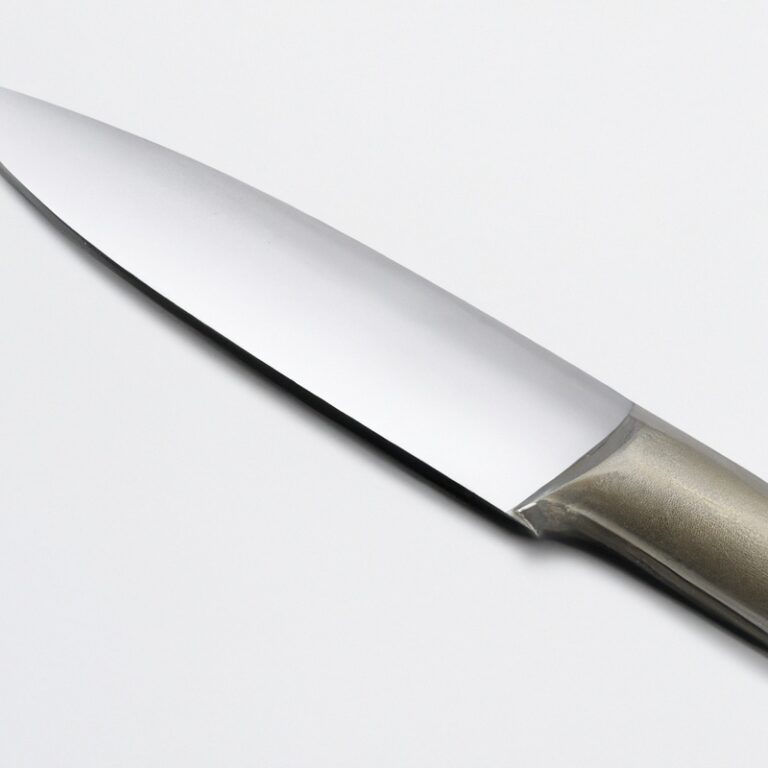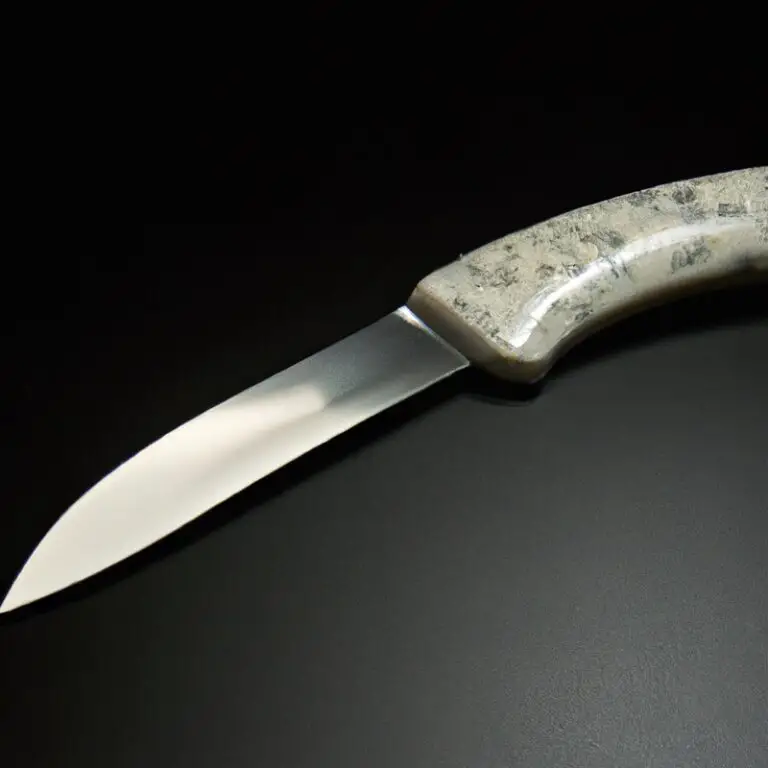How To Avoid Blade Chipping On a Gyuto Knife? Quick Tips
Key Takeaways:
- Avoid using your Gyuto knife on hard surfaces as it can cause blade chipping.
- Invest in high-quality blades made from durable materials to ensure longevity.
- Use a cutting board made of softwood to reduce the risk of blade chipping.
- Regularly maintain your Gyuto knife by sharpening and honing it correctly to avoid undue pressure on the blade.
Do you own a Gyuto knife? Are you tired of blade chipping while using it?
As a chef or home cook, your knife is one of the most important tools in the kitchen, and you want it to be sharp, durable, and reliable.
But if you’re experiencing blade chipping while using your Gyuto knife, it can be frustrating and even dangerous. In this article, I’ll share with you some tips and tricks on how to avoid blade chipping on your Gyuto knife.
From understanding the basic causes of blade chipping to the best storage and handling methods, I’ve got you covered.
Let’s get started!
| Techniques | Description |
|---|---|
| Proper Cutting Surface | Using a cutting board made of soft woods such as maple, birch, or bamboo can prevent blade chipping. |
| Correct Cutting Technique | Using the correct cutting technique, such as avoiding twisting the blade while cutting and avoiding hitting bones or hard objects, can prevent blade chipping. |
| Avoid Cutting Frozen Foods | Frozen foods put too much stress on the blade, which can cause chipping. Avoid cutting frozen foods or let them thaw first before cutting. |
| Regular Honing and Sharpening | Regular honing and sharpening of the blade can maintain the edge and prevent uneven wear, which can lead to chipping. |
Understanding the Basics: What Causes Blade Chipping on a Gyuto Knife
Blade chipping on a Gyuto knife is often caused by excessive force and impact during use. This can happen when the knife strikes hard surfaces, such as bones, countertops, or hard vegetables.
The steel used in the blade can also play a role in chipping.
Harder steels are more prone to chipping due to their increased brittleness. Improper maintenance and sharpening techniques can also lead to blade chipping.
Using a dull or improperly sharpened knife puts additional stress on the blade, increasing the likelihood of chips.
In summary, blade chipping on a Gyuto knife is typically caused by excessive force, hard surfaces, harder steel, and improper maintenance and sharpening techniques.
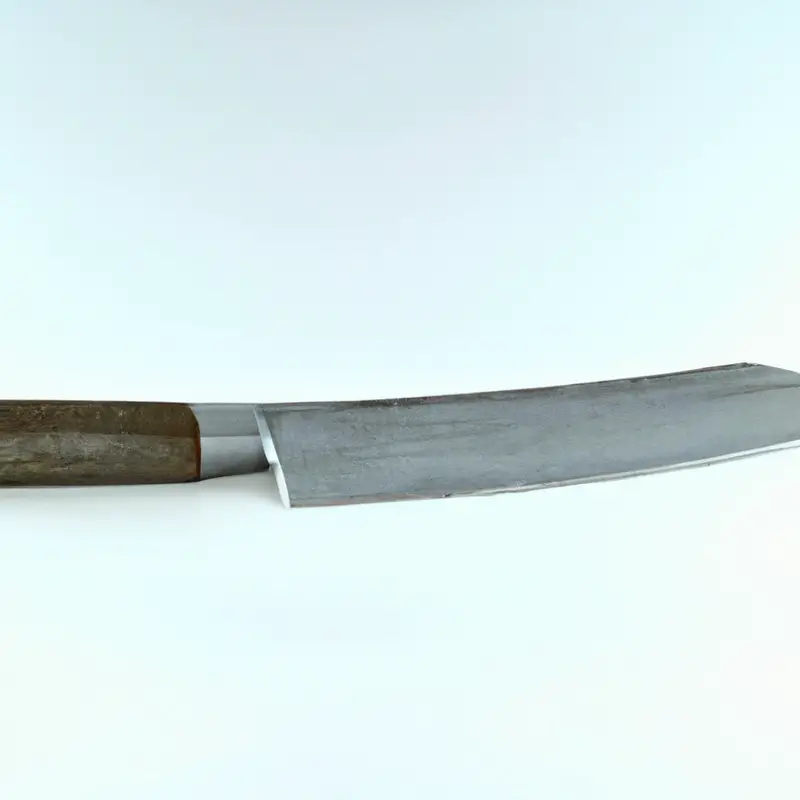
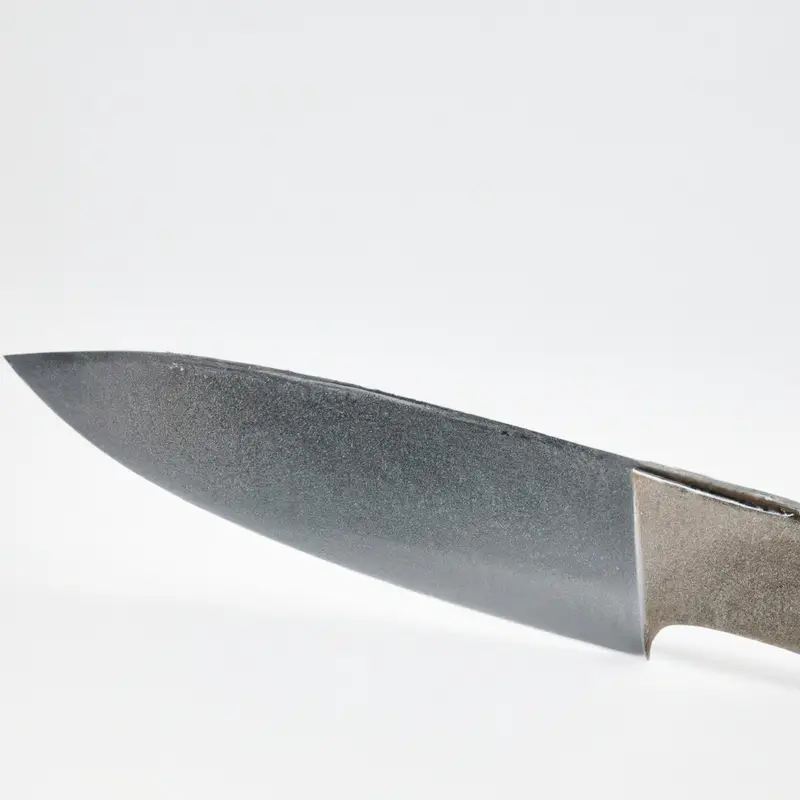
Choosing the Right Cutting Board: A Crucial Step in Avoiding Blade Chipping
The choice of cutting board is a crucial factor in preventing blade chipping on your Gyuto knife. Avoid using hard surfaces such as glass, granite, or ceramic plates as they are especially damaging to the blade.
Instead, choose a cutting board made of softer materials such as wood, bamboo, or plastic.
While wood is the most preferred by many chefs due to its durability and moisture-resistant properties, bamboo and plastic cutting boards are also ideal options. Ensure that the cutting board is well-maintained, free of warping, and kept clean to prevent bacterial growth.
Ultimately, investing in a high-quality cutting board will not only protect your Gyuto knife but also provide a comfortable and safe working area for your food preparation.
Honing vs. Sharpening: Essential Maintenance for Your Gyuto Knife
To avoid blade chipping on your Gyuto knife, it is crucial to understand the difference between honing and sharpening. Honing is the process of realigning the blade’s edge, while sharpening involves removing a small amount of metal from the blade to create a new edge.
Honing can be done frequently, even after each use, with a honing rod to maintain the blade’s sharpness and prevent chipping.
However, if the blade has become dull or damaged, sharpening may be necessary using a sharpening stone or electric sharpener. It is essential to use the correct sharpening angle and pressure to avoid damaging the blade further.
Additionally, deburring the blade after sharpening can help remove any rough edges and prevent chipping.
Regular maintenance, including both honing and sharpening, is crucial for the longevity of your Gyuto knife and to avoid blade chipping.
The Importance of Proper Angle and Pressure During Sharpening to Avoid Blade Chipping
Proper angle and pressure during sharpening are crucial factors in preventing blade chipping on a Gyuto knife. It is essential to maintain the correct angle as you sharpen to ensure that the blade’s edge remains even and that the pressure applied during the process remains constant.
A consistent angle as you move from one side to the other minimizes the possibility of creating an uneven bevel that could potentially cause blade chipping.
Using a high-quality sharpening stone, lubricant, and honing guide can aid in achieving the perfect angle when sharpening your Gyuto knife. Additionally, exerting the appropriate amount of pressure while sharpening your blade will ensure that the edge remains sharp and doesn’t become dull or damaged.
Remember to be gentle and avoid unnecessary pressure while you work, as too much force can cause blade chipping.
Deburring: The Secret Step to Keeping Your Gyuto Blade Chip-Free
Deburring is a crucial step to keep your Gyuto blade chip-free. Deburring is the process of removing any small burrs or rough edges that may occur during sharpening.
These burrs can weaken the blade edge and cause chips when cutting.
To deburr a Gyuto knife, use a honing steel or fine-grit whetstone to gently run along the edge, smoothing out any rough spots. This should be done after every sharpening session.
Deburring will not only help keep your blade chip-free but also extend its lifespan.
Remember to use light pressure and a consistent angle when deburring, to avoid damaging the blade edge.
Using the Correct Cutting Techniques to Prevent Blade Chipping on Your Gyuto knife
Using the correct cutting techniques is vital to prevent blade chipping on your Gyuto knife. Firstly, it is essential to use a proper grip and maintain a consistent angle while cutting, avoiding twisting or sawing motions that can damage the blade.
Secondly, avoid excessive force when cutting, especially on harder materials, as it can damage the blade’s edge.
Lastly, ensure that you use a slicing motion and avoid chopping or twisting the blade while cutting to prevent chipping. Practicing these techniques will help preserve the integrity of your Gyuto knife’s blade and extend its lifespan.
Storage and Handling: Best Practices to Prevent Blade Damage on Your Gyuto Knife
Proper storage and handling of your Gyuto knife is crucial in preventing blade chipping. Here are some best practices to follow:
- Store your knife in a knife block, magnetic rack, or protective sheath when not in use to prevent nicks and scratches.
- Never leave your knife in a sink or dishwashing machine, as exposure to water and harsh detergents can damage the blade.
- Avoid using your knife on hard surfaces such as metal or glass, as they can cause chips and dull the blade quickly.
- Always hand wash and dry your knife immediately after use using mild soap and a soft cloth.
- Keep your knife sharp to prevent applying undue pressure and causing chips by honing and sharpening it regularly.
By following these practices, you can ensure that your Gyuto knife remains in excellent condition for years to come.
Using a Honing Rod on Your Gyuto Knife: Tips and Tricks for Avoiding Blade Chipping
Using a honing rod is an essential maintenance step for your Gyuto knife to prevent blade chipping. To avoid any damage to the blade, ensure that you are using the right honing rod for the steel type of your Gyuto knife.
Generally, ceramic honing rods are suitable for harder steel types, while diamond, tungsten, or steel honing rods are better suited for softer steel types.
When using the honing rod, make sure to apply the right amount of pressure and angle. Hold the honing rod at a 15-degree angle and apply light pressure while honing.
Avoid using too much pressure or honing at improper angles, as this can cause blade damage.
Also, it is essential to clean your honing rod regularly to avoid any buildup of debris or dirt. Always wipe the honing rod with a clean towel after each use.
Lastly, honing cannot replace sharpening, so ensure that you sharpen your Gyuto knife frequently to maintain its sharpness and prevent blade chipping.
Understanding the Different Types of Steel Used in Gyuto Knives and their Impact on Blade Chipping
Gyuto knives are made of different types of steel, and each steel has a unique property that affects the blade’s durability and tendency to chip. Stainless steel is less prone to rust and staining, but it usually has a lower hardness level, making it more susceptible to chipping.
High carbon steel, on the other hand, is harder and can retain its sharpness longer, but it requires more maintenance to prevent rust.
Damascus steel is known for its attractive pattern, but it is mainly a combination of different steel types, making it difficult to determine its specific properties. Understanding the type of steel used in your Gyuto knife can help you take better care of it and prevent blade chipping.
Common Mistakes to Avoid when Using Your Gyuto Knife: A Comprehensive Guide for Beginners
To use your Gyuto knife efficiently and avoid blade chipping, there are some common mistakes to avoid. As a beginner, always ensure these points:
- Avoid excessive force- Using too much pressure while cutting through hard food items can cause the blade to bend or even chip.
- Avoid cutting bones- Gyuto knives are ideally designed for slicing or chopping through meats, vegetables, and fruits. Avoid using it to cut bones, as it can instantly chip or damage the blade.
- Avoid frozen food- Try not to use your knife on frozen products, as it can lead to blade damage or chipping.
- Avoid washing in the dishwasher– Washing your Gyuto knife in a dishwasher might damage its edge and cause it to chip. Instead, wash it by hand in lukewarm water with mild detergent.
- Avoid using it as a can opener- Opening cans with your Gyuto knife will not only damage and dull its blade but also result in an unsatisfactory result. Use a can opener for this purpose.
By following these simple guidelines, beginners can keep their Gyuto knife in excellent condition and prevent blade chipping.
Final Verdict
Preventing blade chipping on a Gyuto knife requires a combination of proper maintenance, cutting techniques, and storage practices. By understanding the causes of blade chipping and adopting the techniques discussed in this article, you can ensure your Gyuto knife remains in top condition for years to come.
Remember to choose the right cutting board, use proper honing and sharpening techniques, and handle your knife with care.
By following these best practices, you can avoid common mistakes and maintain the quality and longevity of your Gyuto knife. As an expert in the field, I recommend taking the time to properly care for your knife and investing in high-quality materials for optimal results.
Trust in these methods, and you’ll have long-lasting, premium-quality cuts every time.

